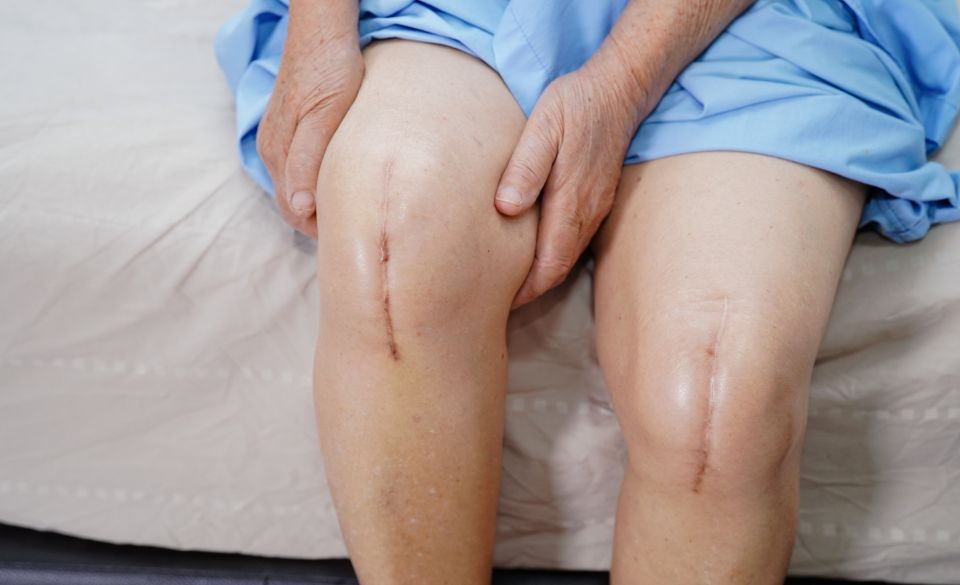
Deadlift After Knee Replacement: A Journey of Strength and Resilience
Page Contents
Undergoing knee replacement surgery can be a life-changing event, restoring mobility and reducing pain for individuals with knee joint deterioration. While the road to recovery after knee replacement surgery is a journey in itself, it doesn’t mean you have to give up on activities that challenge and empower you. One such exercise is the deadlift, a compound movement known for its ability to build strength and promote overall fitness. In this article, we will explore how you can safely and effectively incorporate deadlifts into your fitness routine after knee replacement surgery, empowering you to reclaim your strength and resilience.
Can I Deadlift With A Knee Replacement?
It is generally possible to deadlift with a knee replacement, but it is important to approach it with caution and consult with your healthcare professional before starting any exercise program.
After knee replacement surgery, it is crucial to prioritize proper rehabilitation and allow ample time for healing before engaging in activities like deadlifting. Your orthopedic surgeon or physical therapist can provide specific guidelines based on your unique condition, taking into account factors such as the type of knee replacement, your level of recovery, and any residual limitations.
Deadlift After Knee Replacement – What You Should Know
Before embarking on any post-knee replacement exercise program, it is crucial to consult with your orthopedic surgeon or physical therapist. They can provide valuable insights into your unique condition, offer guidance on exercise modifications, and ensure you’re ready to start deadlifting. Every individual’s recovery journey is different, and obtaining professional advice is essential for a safe and effective approach.
Following knee replacement surgery, a comprehensive rehabilitation program is typically recommended to restore range of motion, rebuild muscle strength, and improve stability. Focus on diligently following your prescribed rehabilitation exercises and gradually progressing to more challenging movements. Strengthening the muscles surrounding the knee, such as the quadriceps and hamstrings, will provide a solid foundation for deadlifting.
Maintaining proper form and technique during the deadlift is crucial for preventing injury and optimizing results. Start with lighter weights or even just bodyweight to focus on mastering the correct movement pattern. Engage your core, hinge at the hips, and keep your back straight as you lower the weight towards the floor. Avoid excessive bending or twisting of the knees and maintain a controlled, fluid motion throughout the lift.
Depending on your specific knee replacement and any remaining limitations or discomfort, modifications may be necessary to accommodate your needs. Consider using a slightly wider stance or adjusting your foot positioning to alleviate stress on the knee joint. You might also benefit from using a trap bar or hex bar, which allows for a more upright posture and reduces strain on the knees.
As with any exercise, gradual progression is key to prevent overloading the knees and minimize the risk of injury. Start with lighter weights and gradually increase the load as your strength and comfort levels improve. Listen to your body’s signals, and if you experience pain or discomfort, adjust your approach, seek professional guidance, or consider alternative exercises that target similar muscle groups.
Rebuilding strength and confidence after knee replacement surgery takes time and patience. Respect your body’s limits and be mindful of your own journey. It’s crucial to focus on your progress rather than comparing yourself to others. Celebrate small victories along the way, and don’t hesitate to seek support from a qualified trainer, physical therapist, or a supportive community to stay motivated and inspired.
How Long After A Knee Replacement Can You Do A Deadlift
The timeline for when you can start doing deadlifts after knee replacement surgery varies for each individual and should be determined in consultation with your healthcare professional. In general, it is important to prioritize proper rehabilitation and allow sufficient time for healing before engaging in activities like deadlifting.
Recovery from knee replacement surgery typically involves a period of rehabilitation to restore range of motion, strength, and stability in the knee joint. The duration of this recovery phase can vary depending on factors such as the type of knee replacement, your overall health, and your progress in rehabilitation.
Your healthcare professional, such as your orthopedic surgeon or physical therapist, will provide specific guidelines and recommendations based on your individual situation. They will consider factors like your surgical technique, tissue healing, muscle strength, and overall recovery progress.
It is crucial to follow their guidance and complete your rehabilitation program diligently to ensure that your knee is adequately prepared for the demands of deadlifting. This includes improving muscle strength, joint stability, and ensuring proper technique and form.
Attempting deadlifts too soon after knee replacement surgery can increase the risk of complications or setbacks in your recovery. Pushing yourself too quickly may put unnecessary stress on the knee joint and hinder the healing process.
Listen to your body and progress gradually. Start with lower-impact exercises and gradually work your way towards deadlifts under the guidance and approval of your healthcare professional. They will provide the most accurate timeline and ensure that you are ready to safely perform deadlifts without compromising your recovery.
Summing Up
In conclusion, while it is possible to deadlift after knee replacement surgery, caution, and consultation with your healthcare professional are essential. The decision should be based on individual circumstances, including the type of knee replacement, recovery progress, and any residual limitations. Proper rehabilitation, focusing on regaining strength and stability in the knee, is crucial before attempting deadlifts.
Maintaining proper form and technique during deadlifts is paramount to minimize stress on the knee joint. Gradual progression, starting with lighter weights and gradually increasing the load, allows for a safe and effective approach. Adaptations and modifications may be necessary to accommodate any remaining limitations, such as foot positioning or using alternative equipment like a trap bar.
Listening to your body and being aware of any discomfort or pain is vital. If you experience issues, it is important to reassess your approach, seek guidance from healthcare professionals, and consider alternative exercises if necessary.
Remember, your healthcare team is the best source of guidance and can provide personalized advice based on your specific situation. By approaching deadlifting after knee replacement surgery with caution, proper rehabilitation, and guidance, you can potentially incorporate this exercise into your fitness routine and continue to progress towards your strength and fitness goals.




